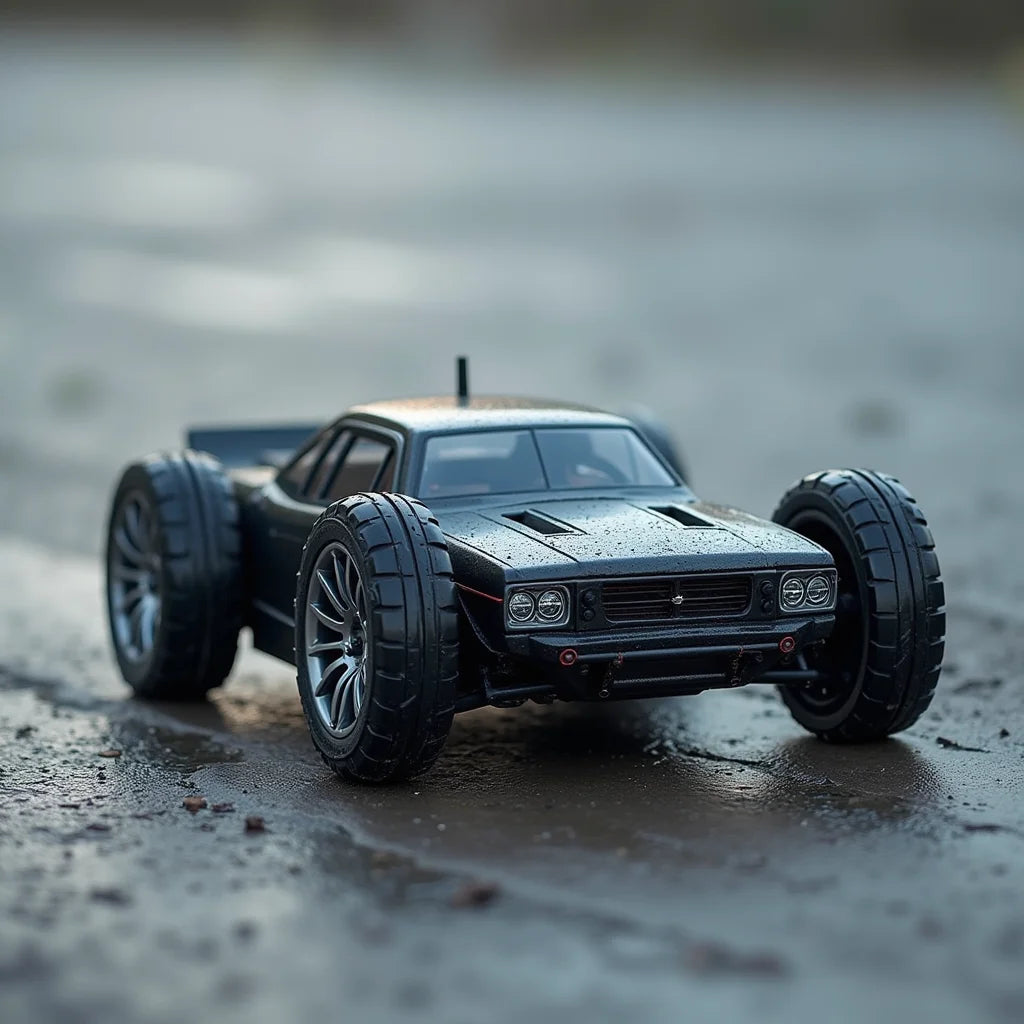
Remote Controlled Vehicles Myths Debunked with Facts
Share
Updated on: 2025-09-24
Table of Contents for Remote Controlled Vehicles Guide
- Getting Started with Remote Controlled Vehicles
- Common Mistakes with Remote Controlled Vehicles
- Buyer’s Checklist for Remote Controlled Vehicles
- FAQ Section: Remote Controlled Vehicles
- Wrap-Up & Final Thoughts on Remote Controlled Vehicles
- Q&A Section: Remote Controlled Vehicles Community
- About the Author: TURBO DRIFT™ TURBO DRIFT™
Getting Started with Remote Controlled Vehicles
Remote Controlled Vehicles are a welcoming hobby for many people, from curious beginners to seasoned enthusiasts. In the first moments of choosing, it may help to understand how RC vehicles compare across types, power systems, durability, control range, and maintenance. When people say RC vehicles or radio-controlled vehicles, they mean models you operate from a distance, including remote control cars, RC drones, boats, and trucks. If you wish to browse different styles and budgets in one place, you might consider exploring an updated RC collection such as RC collection.
Key categories of radio-controlled vehicles
Four categories tend to stand out for radio-controlled vehicles:
- Remote control cars: On-road cars suit smooth surfaces and higher speeds. Off-road buggies and trucks handle gravel, grass, or light trails with more ground clearance and knobby tires.
- RC drones: Multirotor models offer agile flight, hovering, and aerial views. Entry-level drones emphasize stability, while advanced frames favor responsiveness.
- RC trucks and rock crawlers: Designed for climbing and technical terrain, these prioritize torque, suspension articulation, and control over top speed.
- RC boats: For lakes and calm water, these models range from scale cruisers to high-speed hulls.
If you prefer the thrill of slides and precise cornering, a drift-ready remote control car like the Turbo Drift car may feel appealing for smooth surfaces and parking-lot fun.
Important specs that matter in Remote Controlled Vehicles
Several specs will shape your experience and help you find the best fit:
- Scale: Common scales include 1/10 and 1/16 for cars and trucks. Larger scales are often more stable and detailed, while smaller scales are easier to store and transport.
- Power system: Brushed motors are budget-friendly and gentle for beginners. Brushless systems offer more efficiency, speed, and longevity, often used in hobby-grade remote control cars and RC drones.
- Battery: Many RC vehicles use LiPo (lightweight and punchy) or NiMH (simpler and more forgiving). Capacity (mAh) and cell count affect runtime and power.
- Range: Transmitter and receiver quality determine how far your radio-controlled vehicles can go while maintaining a stable link.
- Durability: Look for reinforced arms, metal gears, sealed bearings, and water-resistant electronics if you expect dust, puddles, or occasional tumbles.
For off-road fun, off-road remote controlled vehicles with long battery life can reduce interruptions. A truck designed for trails, such as the robust Turbo Track truck, may offer the ground clearance and traction you appreciate on mixed terrain.
Safety and care basics for Remote Controlled Vehicles
It is considerate to operate RC vehicles in open areas away from bystanders. For batteries, use a compatible charger and avoid unattended charging. After each session, brush off dust, check for loose screws, and store batteries at a partial charge when recommended by the battery type. Small, regular steps will keep your remote controlled vehicles feeling fresh and responsive.
Common Mistakes with Remote Controlled Vehicles
Many early frustrations can be prevented with a few mindful habits.
Setup oversights in RC vehicles
- Skipping manual calibration: Not calibrating throttle endpoints or steering trim can reduce control precision and create uneven acceleration.
- Using incorrect surfaces: Running drift tires on rough asphalt or off-road tires on sleek indoor floors makes handling less predictable.
- Ignoring gear mesh: Too tight or too loose mesh between pinion and spur gears causes noise, heat, and premature wear.
- Overlooking radio failsafe: A failsafe prevents a runaway vehicle if signal drops. Confirm it is active and set to neutral.
Battery and charging mistakes
- Mismatching charger and battery: Using an incompatible charger risks battery damage. Check chemistry, cell count, and recommended charge rate.
- Fully draining LiPo packs: Deep discharge shortens life. Consider stopping when power sags and follow safe storage levels.
- Charging right after a run: Warm packs benefit from a short cool-down before charging to protect longevity.
- Overlooking connectors: Loose plugs or worn connectors lead to intermittent power and frustration during runs.
Buyer’s Checklist for Remote Controlled Vehicles
Use this simple list to compare models and confirm you have what you need for a smooth first outing.
Quick checklist before you buy
- Intended use: On-road, off-road, air, or water? Consider where you will run most often.
- Skill level: Beginners often appreciate brushed motors, lower speeds, and stability features. Advanced users may prefer brushless power and tunable suspension.
- Runtime needs: Estimate session length and choose battery capacity and spares accordingly.
- Range and signal: Look for reliable 2.4 GHz radios with solid interference resistance.
- Durability cues: Metal driveline parts, sealed bearings, and water-resistant electronics add resilience.
- Maintenance access: A design with easy access to battery trays, diff housings, and electronics saves time.
- Parts and support: Confirm spare parts and upgrades are available for your chosen platform.
- Charger compatibility: Ensure your charger matches battery chemistry and connector type.
- Extras included: Some kits include batteries and a charger; others require separate purchases.
- Try an example: If drifting interests you, explore options like the Porsche Drift car for responsive handling, or a versatile model like the Turbo GT model if you appreciate speed and upgrades.
FAQ Section: Remote Controlled Vehicles
What is the best remote controlled vehicle for beginners?
A balanced beginner choice is a 1/16 or 1/10 scale brushed remote control car with durable bumpers, a dependable 2.4 GHz radio, and a battery plus charger in the box. This keeps setup simple and speed manageable. If off-road paths appeal to you, a small truck or buggy with oil-filled shocks offers stable handling. For the air, a beginner-friendly RC drone with altitude hold and prop guards makes early flights gentler.
How far is the range of remote controlled vehicles?
Range depends on the radio system, environment, and model. Many hobby-grade radios offer comfortable control across open fields. In areas with buildings or trees, range may be shorter due to interference and obstacles. For most drivers and pilots, staying within visual line of sight helps maintain safe control and reliable signal link.
How long do RC vehicle batteries last?
Runtime varies by battery capacity (mAh), motor type, gearing, and driving style. Light cruising on a brushed setup can last longer than full-throttle runs on a brushless system. Keeping a spare battery and using an appropriate charger offers more time on the track or in the air with minimal wait.
How do I maintain radio-controlled vehicles?
After each session, remove dirt and dust, inspect screws and linkages, and check tires or props for wear. Keep drivetrain parts clean and lubricated as recommended by the manufacturer. For LiPo batteries, store them at a partial charge in a safe, dry place. Small, routine tasks prevent larger issues and help your radio-controlled vehicles feel consistent.
Are RC drones and cars safe for indoor use?
Indoor use can be appropriate in open spaces with good visibility. For RC drones, prop guards and low-speed modes help protect walls and furniture. For cars, choose tires that will not mark floors and modest speeds that fit the space. When in doubt, a quiet outdoor area increases safety and comfort.
Wrap-Up & Final Thoughts on Remote Controlled Vehicles
Remote Controlled Vehicles combine creativity, skill, and joyful moments. Selecting the right model involves matching your goals to type, budget, and maintenance comfort. If you enjoy smooth slides, a drift car may suit you; if you love trails, an off-road truck might be the better fit; and if you dream of flight, a stable RC drone can open new perspectives. With a thoughtful approach to batteries, range, and durability, your first experience may feel relaxed and rewarding. When you are ready to compare options, you could explore a curated range in the RC collection linked above.
Q&A Section: Remote Controlled Vehicles Community
Which off-road remote controlled vehicles have long battery life?
Look for trucks or buggies that accept higher-capacity packs and feature efficient drivetrains. Brushed setups with conservative gearing often run longer per charge. A sturdy off-road platform like the Turbo Track truck provides the clearance and traction useful for trails, and with a spare battery, you can extend your time between charges.
What are the best remote controlled vehicles for adults?
Adults often appreciate models that blend performance with reliability. Brushless on-road cars deliver speed for larger paved spaces, while rock crawlers reward careful driving on technical terrain. If drifting appeals to you, the Turbo Drift car offers a focused, engaging experience. For those who enjoy both speed and visual flair, the Turbo GT model is another option to consider.
Which upgrades give the biggest performance gains?
Three upgrades tend to offer noticeable gains: quality tires matched to your surface, a brushless power system for efficiency and torque, and metal drivetrain components for durability. Suspension tuning and proper gear mesh also improve handling and reliability. Start with tires and setup before moving to electronics, as these basics often deliver the best value for feel and control.
About the Author: TURBO DRIFT™ TURBO DRIFT™
TURBO DRIFT™ TURBO DRIFT™
TURBO DRIFT™ TURBO DRIFT™ shares friendly, practical guidance on Remote Controlled Vehicles, from remote control cars to RC drones and trucks. With a focus on clear language and dependable tips, the goal is to help readers enjoy smooth first steps and steady progress. Thank you for spending time here—wishing you many safe and happy runs.
